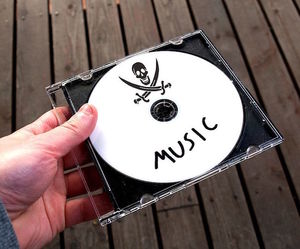Believe It Or Not, This Report Says Music Piracy Has Increased
 We live in an age where it’s probably the easiest it has ever been to access just about any kind of music you want, and all for free. The music business has always been driven by convenience of consumption, and it’s difficult to imagine how much easier it can get than joining the free tier of one of the dozens of streaming services. That’s why the declaration that music piracy rose 14.7% in MUSO’s 2017 Global Piracy Report was such a surprise. Why would anyone want to even bother pirating music when it’s all available for such a low cost or even free?
We live in an age where it’s probably the easiest it has ever been to access just about any kind of music you want, and all for free. The music business has always been driven by convenience of consumption, and it’s difficult to imagine how much easier it can get than joining the free tier of one of the dozens of streaming services. That’s why the declaration that music piracy rose 14.7% in MUSO’s 2017 Global Piracy Report was such a surprise. Why would anyone want to even bother pirating music when it’s all available for such a low cost or even free?
If you read the report a little more closely however, it’s not measuring files that are downloaded (which is how we think of piracy), but visits to pirate websites. It states that last year there were more than 73.9 billion (yes, with a “b”) visits to music piracy sites worldwide. This breaks down into 5 different types: web streaming sites (30.5 billion), web download sites (21.2 billion), streaming ripping sites (15.7 billion), public torrent sites (6 billion), and private torrent sites (500 million). 87.13% of these visits were from mobile users.
The report is actually across all types of media, not just music. That said, it also indicates that the U.S. had the most pirate site visits across all categories with 27.9 billion, followed by Russia (20.6 billion), India (17 billion), Brazil (12.7 billion) and Turkey (11.9 billion).
Once again, we’re talking visits here, not downloads, but the fact of the matter is that when someone listens to a song online and the artist, songwriter, label and publisher doesn’t receive any form of financial compensation, that’s piracy. You can plug YouTube and Facebook video into that mix as well in many cases.
Then there’s the fact that while most of the world has easy access to streaming, there are many regions that still haven’t experienced widespread adoption yet, Japan and Russia being a couple.
So piracy still exists, at least in some form, and it’s still robbing artists of money they deserve. That said, we all know that it will never disappear. All we can hope is to keep it in check.
[Graphic by Santeri Viinamäki]

